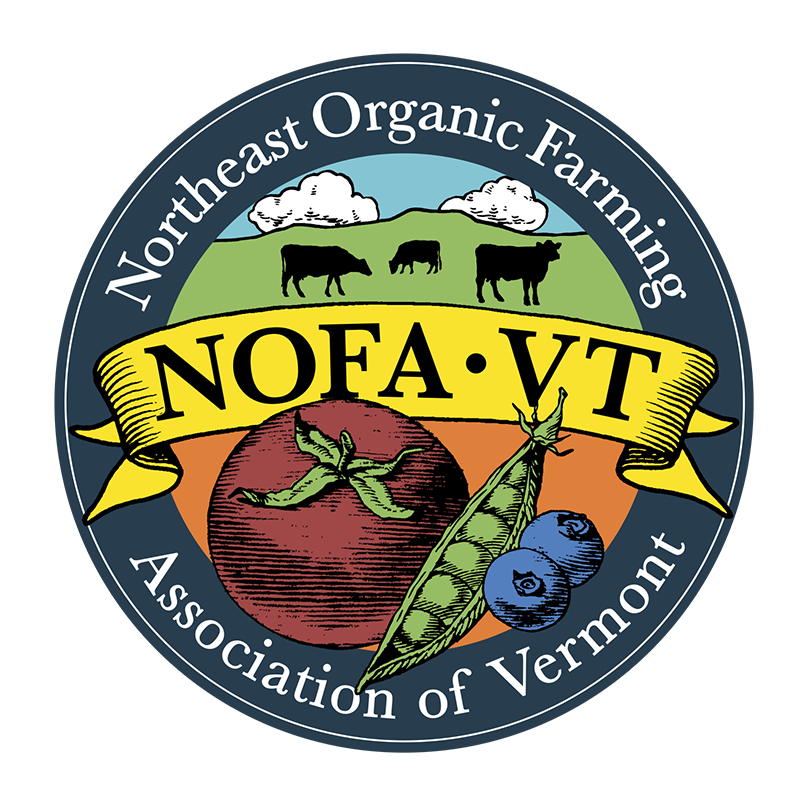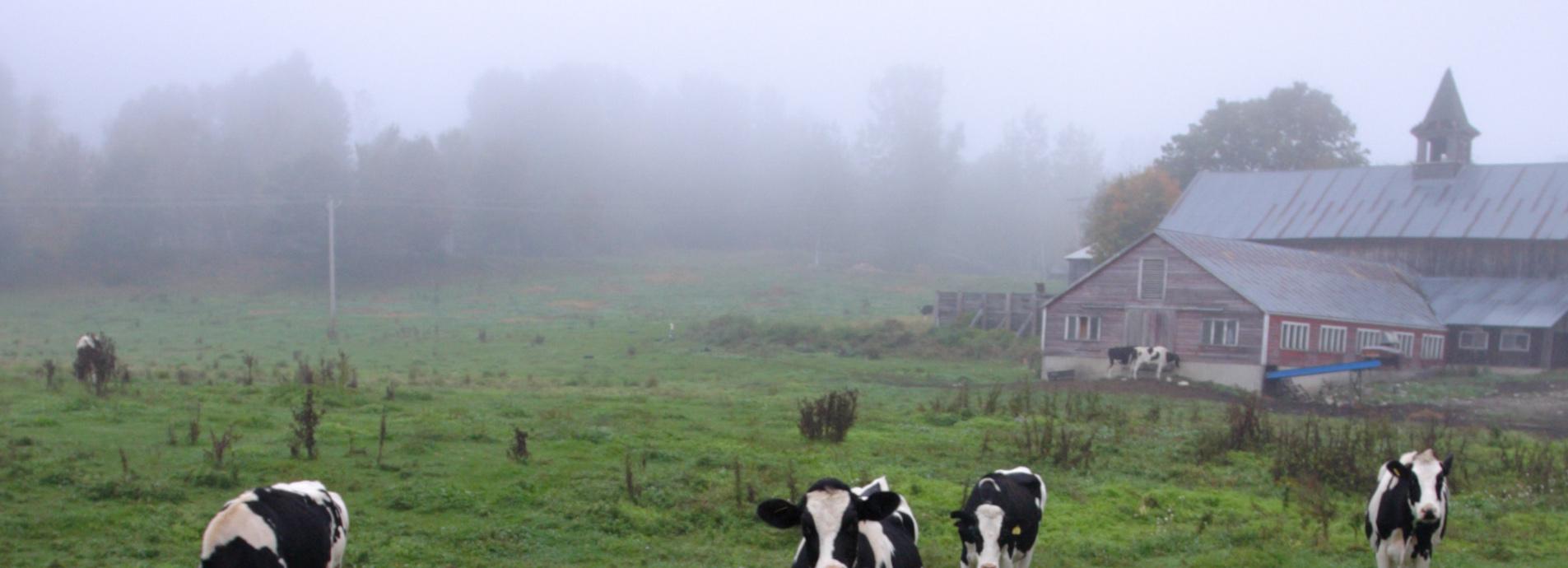While food insecurity rates in Vermont have always been serious, the COVID-19 pandemic magnified challenges to food access. Nearly one third of Vermonters experienced food insecurity in 2020, up from approximately 11% before the pandemic. In response, the federal government created several emergency assistance programs (e.g. SNAP emergency allotments, Vermont Everyone Eats), yet with the end of the Federal COVID-19 Public Health Emergency this May, these pandemic-era assistance programs are no longer available to help address the need, which only continues to be intensified by inflation and the increasing wealth gap. When approaching work in food security, we at NOFA-VT believe that it is important to consider the dual components of supporting folks in meeting their immediate needs, while also identifying long-term structural changes to address the root causes of inequities and food insecurity. In response to significant growth in demand for food assistance programs over the last few years, we have been assessing NOFA-VT’s role in both short- and long-term food security work, with a desire to ensure our food access programs are both effective and equitable as they grow and impact more Vermonters.
At NOFA-VT, our food access programs prioritize both food access and farm viability in tandem, and we aim to think about what a food system can look like beyond the status quo. While our suite of local food access programs have positively impacted many Vermont households and producers for decades, we continue to examine how they still may play into systems of oppression. We are continueing to take a critical eye to the programs, asking ourselves and our community members what feels inequitable about them and how we can use these programs as tools for creating a more just, equitable food system. And, as a currently predominantly white-led organization, we know will continue to make (and learn from) mistakes as we work to deconstruct any harmful internalized assumptions.
While our food access programs primarily focus on reducing financial barriers, we recognize that there are many challenges to eating fresh, locally grown food beyond finances. Providing financial assistance is a short-term solution for only a portion of folks experiencing food insecurity. Aside from limited program funding, participation in these programs is also restricted by a number of barriers that financial assistance does not resolve, including those related to transportation, cooking knowledge, time and equipment to prepare food, familiarity with the local food products available, and public awareness about these programs. Our goals in our local food access work are three-fold: 1) operating our programs successfully and meeting as much demand as we can, 2) evaluating, updating, and improving our programs to reflect the changing needs of people living in Vermont, and 3) supporting longer-term systems change to advance more equitable local food access in Vermont.
Short-Term, Responsive Solutions to Food Insecurity
We operate multiple programs that reduce the cost of local, organic food while ensuring farmers are fully compensated for their work. Two programs in particular, Farm Share and Crop Cash, offer widespread support and have been our recent focus for growth.
Farm Share
The Farm Share Program provides discounts on community supported agriculture (CSA) shares at local farms for folks who need financial assistance. Once Farm Share participants pick which CSA they’d like to join, NOFA-VT pays the farm for a portion of the share, allowing the CSA member to pay for the remainder and pick up their food in the same way as all the other CSA members. In wake of the COVID-19 pandemic, the program saw rapid growth—demand for discounted shares nearly doubled from 2019 to 2020, and demand in 2022 was triple the pre-pandemic numbers.
As the program has grown to impact more people, we conducted a comprehensive survey of program participants, participating farms, and folks who don’t take part in the Farm Share Program to identify where the program flourishes and where it falls short. The feedback was overwhelmingly positive; most participants shared that they enjoyed the quality of the food and greatly appreciated receiving financial assistance for local food. Similarly, participating farms felt the program had a positive impact by supporting more community members in being able to purchase their food, while providing them with additional revenue. However, challenges in the program model were also identified, including transportation to pick up shares, the cost of food even with the subsidy, and language, cultural, and other communication barriers.
From this stakeholder engagement process, we produced short-, medium-, and long-term recommendations to increase access to the Farm Share program and better meet the needs of both the participants and the farms. Some of these steps were implemented into this summer’s application process, including a new sliding scale for cost-sharing up to a 75% discount on shares (an increase from the historical 50% discount), translated application materials and one-on-one support available in Spanish, and increased outreach to organizations supporting refugee and immigrant communities.
Longer-term shifts to the program will focus on building relationships with community partners to better serve BIPOC, immigrant, and refugee communities, exploring avenues for greater participant involvement in program development and funding decisions, and restructuring the application review process from first-come-first-serve to something more equitable. It is also evident that the Farm Share model cannot be adapted to fit everyone’s needs, especially for folks in the most marginalized communities experiencing numerous barriers. In order to support these communities that may not benefit from Farm Share, we are working with other partners to support local food access initiatives in their communities.
Crop Cash, Crop Cash Plus, and Accessibility at Farmers Markets
Crop Cash matches customers’ SNAP benefits with “incentive coupons” that can be used to purchase local produce at roughly 40 farmers markets across the state, allowing shoppers to purchase more food with the same amount of SNAP benefits. We know that farmers markets are an important way to support local farmers and producers directly, yet for many community members, there are a number of transportation, financial, cultural, and linguistic barriers to utilizing them. This program reduces the financial burden of purchasing fresh, local food, but we know that only a small percentage of SNAP participants in the state use it. While some barriers to usage lie within the federal rules that govern this program, we have increased our efforts to raise awareness about Crop Cash and support its inclusivity by providing farmers markets with increased SNAP and Crop Cash signage, as well as recommending best practices for inclusive market communication and design.
Thanks to the support from the Vermont Foodbank’s grants program last year, we have been able to expand language access for both Farm Share and Crop Cash, with the aim of better serving traditionally underserved communities in Vermont—particularly immigrants, refugees, and migrant farmworkers. Over the last year, we have had conversations with community partners, farmers market managers, and the U.S. Committee for Refugees and Immigrants (USCRI) Vermont Refugee Resettlement Office to determine which languages would be most effective to have materials translated into. The Crop Cash web page now houses information about the program in eight languages other than English, and we gave several farmers markets and local agencies translated materials to match the linguistic diversity of their communities to better serve clients with languages other than English. This summer, we are planning outreach events with interpreters at Burlington-area farmers markets to support folks who may be new to using SNAP and the Crop Cash program at these markets. We look forward to evaluating these efforts, expanding them, and supplementing them with additional outreach to community partners.
Another exciting pilot we are coordinating this summer is Crop Cash Plus, a companion program to the Crop Cash coupon. Crop Cash Plus, made possible by an allocation from the Vermont Agency of Agriculture, Food and Markets, will enable farmers market SNAP customers to receive an additional $1 matching coupon for every $1 of SNAP they spend. Whereas federal rules dictate that Crop Cash can only be spent on fruits, vegetables, herbs, and culinary plant seeds and starts, Crop Cash Plus coupons can be spent on any SNAP-eligible item. This means that customers will have greater agency and spending power for meat, eggs, dairy, baked goods, and more, and vendors selling those items will directly benefit from those purchases.
The Larger Systems of Change
While we celebrate these programmatic changes for advancing equity in NOFA-VT’s long standing local food access programs, it remains that these programs provide relatively short-term fixes to food insecurity. They also entail a significant amount of administrative burden, especially for farmers market managers in the case of Crop Cash, and rely on the grant-making decisions of funders. We know that while it’s important for us to work to meet immediate needs, we also cannot miss the opportunity to zoom out and additionally support foundational changes to our food system that make it work better for all communities.
One of the ways we engage in this work is by participating in the Vermont Farm Bill Nutrition Coalition, a group of food security organizations, legal advocacy organizations, farmers and growers, food retailers, school partners, and more advocating for federal change in food access programs to make the programs more accessible and better meet folks’ needs. This looks like NOFA-VT staff, farmers, and farmers market managers testifying at the statehouse on SNAP Awareness Day to speak about the importance of having farms and farmers markets be able to accept SNAP benefits and Crop Cash.
This work also looks like being a part of the Vermont Food Security Action Plan process, identifying strategies and investments we can collectively make in a future where all Vermonters have access to the food they want to eat. We know longer-term systems change also requires expanding our concept of what “food security work” looks like and advocating for farmworker rights, holistic and affordable healthcare, universal pre-K, universal school meals, supports for organic farmers, and moving away from farm business “viability” being reliant on profits made from consumers paying for the product. We must continue to question our role in oppressive systems and support the work of those most harmed by them in constructing alternative paths. This process of systemic change will be messy. But, we can always remain grounded in a collective understanding that the food system is our connective tissue and that locally grown, nutritious food is a basic human right. Our food system continually lays plain both the weaknesses and strengths in our society, and thus it is the optimal setting to make radical, impactful change.

